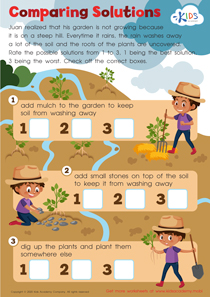Problem-Solving Skills Skip Counting Worksheets for Ages 6-9
4 filtered results
-
From - To
Boost your child's problem-solving skills with our engaging Skip Counting Worksheets for ages 6-9! These worksheets seamlessly integrate math practice and critical thinking by using skip counting to enhance number sense and pattern recognition. The activities are designed to be both fun and educational, allowing children to solve interesting problems while practicing essential skip counting sequences. Each worksheet encourages young learners to identify patterns, skip count by 2s, 5s, 10s, and more, while providing a solid foundation for future math success. Perfect for classroom use or extra practice at home, these worksheets make math enjoyable and accessible.
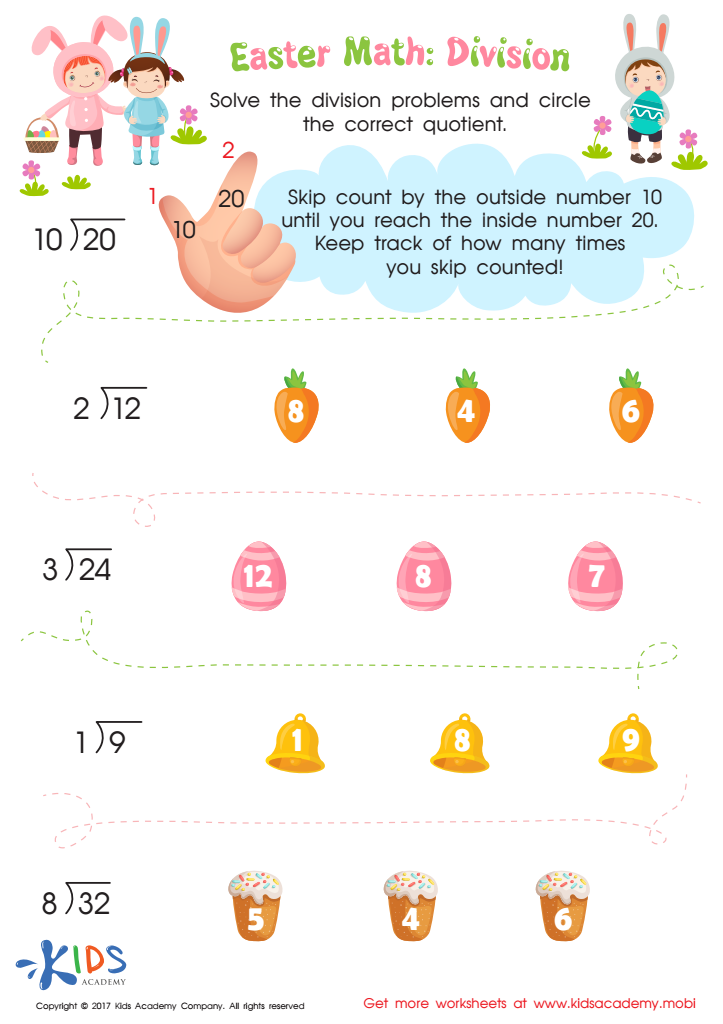

Division Worksheet
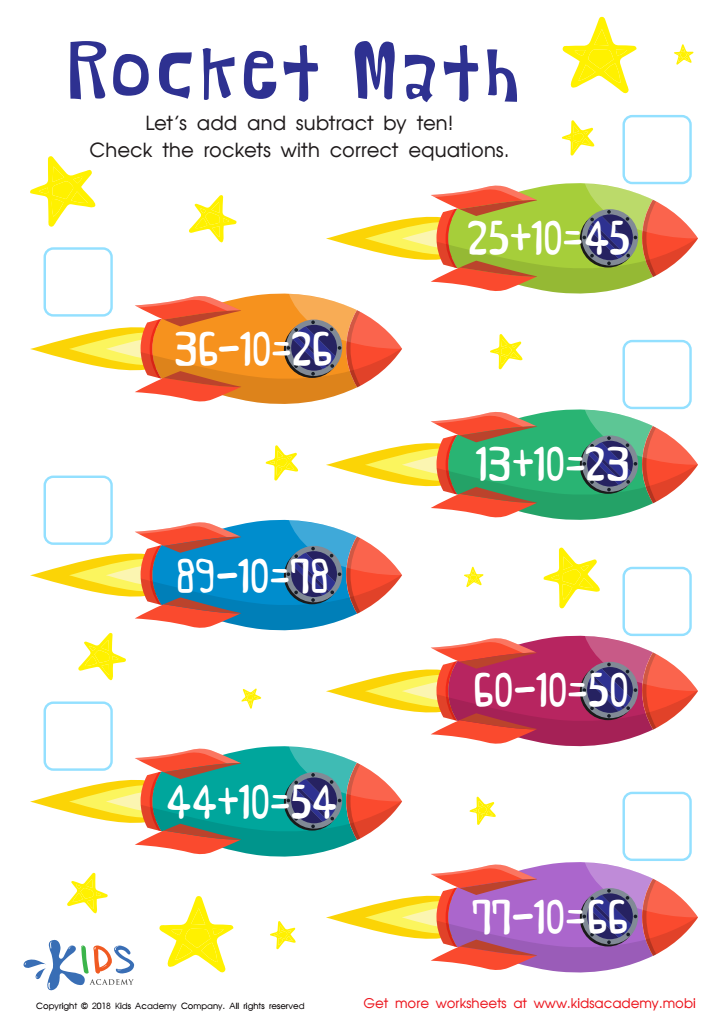

Rocket Math Worksheet
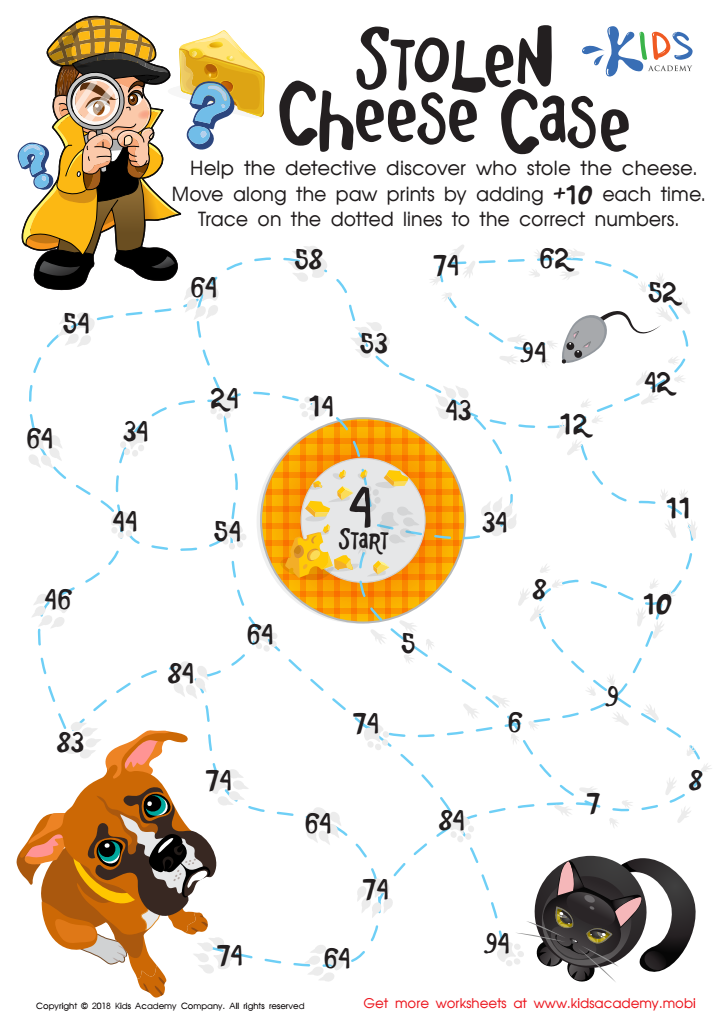

Stolen Cheese Case Maze Worksheet
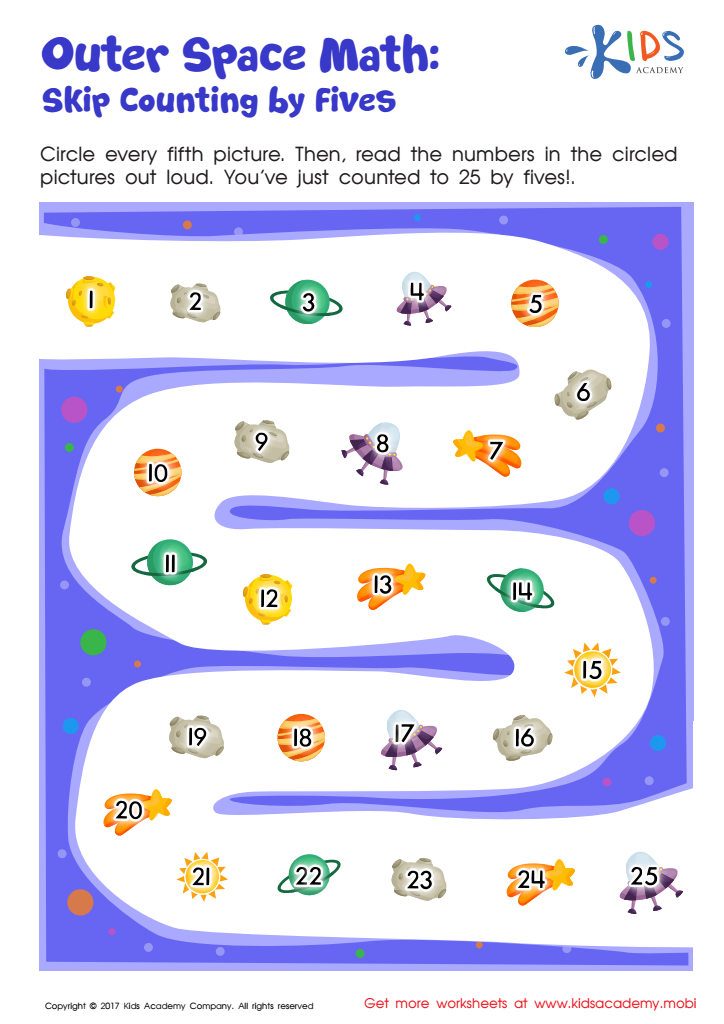

Skip Counting by 5s: Outer Space Math Printable
Problem-solving skills and the practice of skip counting are foundational capabilities that every child between the ages of 6-9 should develop, as these skills lay the groundwork for their future academic and real-life accomplishments. When children engage in problem-solving activities, they enhance their critical thinking, reasoning, and decision-making abilities. These competencies are not only vital for succeeding in more advanced math subjects but are also applicable to everyday life situations, promoting independence and confidence in the young learner.
Skip counting, in particular, is a fundamental mathematical concept where children learn to count by numbers other than one, such as by twos, fives, or tens. This skill is essential for understanding multiplication, division, and number patterns, making math less abstract and more accessible. By mastering skip counting, children can quickly advance to higher arithmetic operations and develop a keen sense of numbers and their relationships.
Moreover, the development of these skills supports cognitive growth, enhances memory, and improves focus. These benefits make skip counting an engaging way for children to navigate more complex mathematical problems, fostering a love for learning. Therefore, both parents and teachers should prioritize these skills to equip children with the essential tools they need for lifelong learning and problem-solving.
 Assign to My Students
Assign to My Students


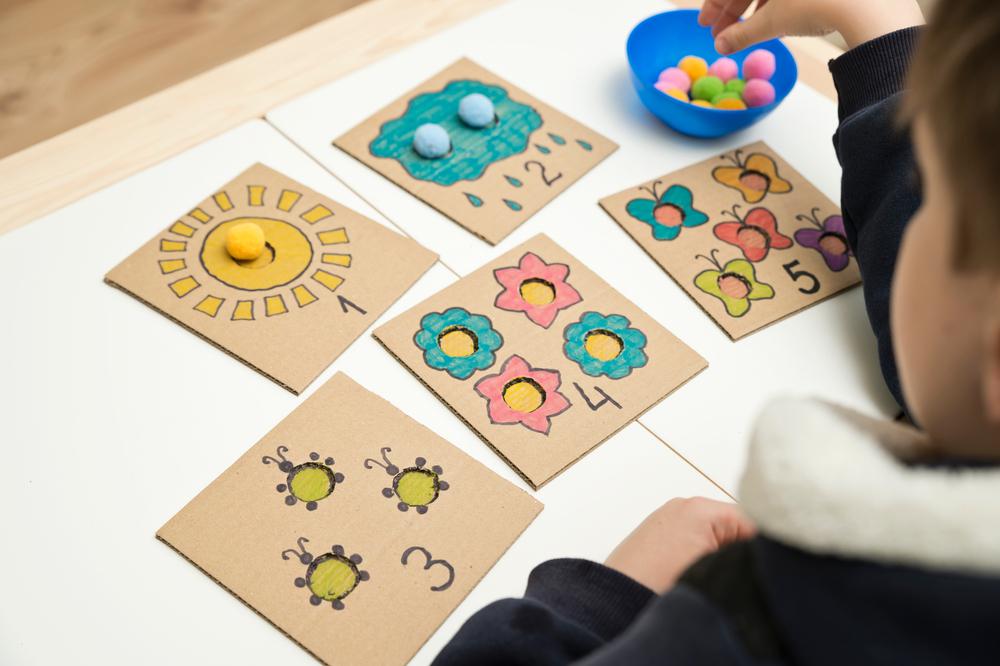


.jpg)






